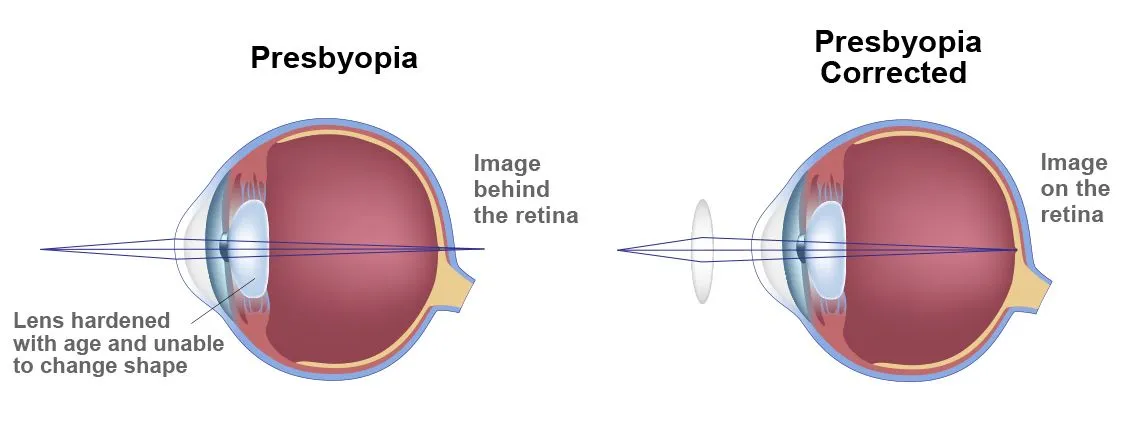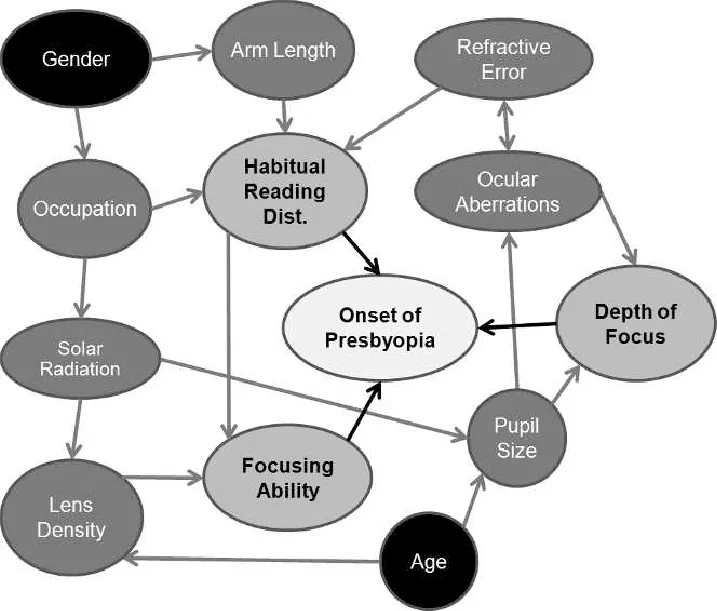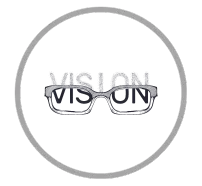Vision Health
Presbyopia and its Symptoms, Causes, and Treatment
FSDAVCFEBFEVSDDVFSD
FSDAVCFEBFEVSDDVFSD
FSDAVCFEBFEVSDDVFSD
What is Presbyopia?
Presbyopia is a common vision condition that typically begins to affect people in their 40s or older. It is marked by a gradual inability to focus on close objects, a change tied directly to the aging process. As we age, the lens inside our eye becomes less flexible, making it harder to adjust our focus from far to near. This condition leads many to rely on reading glasses or multifocal lenses to improve their near vision.
This reliance on corrective lenses is due to the lens of the eye stiffening, which prevents it from changing shape easily. As a result, tasks like reading, sewing, or using digital devices can become challenging without visual aids. Addressing presbyopia promptly with appropriate eyewear ensures continued clarity in daily activities and maintains the quality of life despite this natural change in vision.
Presbyopia often reveals itself through several telltale symptoms that can impact everyday activities. One of the most common signs is the difficulty in reading small print, which may lead individuals to hold books or menus farther away to see the text clearly. This change can make reading and detailed tasks frustrating without corrective measures such as reading glasses.

This reliance on corrective lenses is due to the lens of the eye stiffening, which prevents it from changing shape easily. As a result, tasks like reading, sewing, or using digital devices can become challenging without visual aids. Addressing presbyopia promptly with appropriate eyewear ensures continued clarity in daily activities and maintains the quality of life despite this natural change in vision.

Symptoms and Challenges
Presbyopia often reveals itself through several telltale symptoms that can impact everyday activities. One of the most common signs is the difficulty in reading small print, which may lead individuals to hold books or menus farther away to see the text clearly. This change can make reading and detailed tasks frustrating without corrective measures such as reading glasses.
Another frequent complaint from those experiencing presbyopia is increased eye strain. This strain typically occurs after prolonged periods of doing close work, such as using a smartphone, tablet, or computer. The eyes may feel tired or sore by the end of the day, which can also lead to more frequent headaches, further affecting daily comfort and productivity.
The effects of presbyopia extend beyond just visual disturbances; they can significantly alter one's lifestyle. For instance, hobbies that involve fine details, like sewing or model-building, may become more challenging. Similarly, workplace tasks that require sharp near vision can also be hindered, impacting job performance and satisfaction. This cascade of challenges underscores the importance of recognizing presbyopia symptoms early to manage the condition effectively with suitable vision correction solutions.
Causes of Presbyopia

Presbyopia primarily arises from the natural aging process, which diminishes the flexibility of the eye's lens, making it increasingly challenging to focus on nearby objects. As we age, the proteins within the lens of the eye change, causing the lens to thicken and lose its elasticity—an essential property for focusing on close ranges. Additionally, the muscles surrounding the lens, known as ciliary muscles, weaken over time, further impairing the eye’s ability to focus.
During regular eye exams, an eye care professional will conduct a series of tests to diagnose presbyopia. One key test is the refraction assessment, which helps determine the correct prescription for glasses or contact lenses. This test is crucial as it assesses how light waves are bent into your eye, highlighting any specific corrective needs related to the reduced focusing ability associated with presbyopia.

A near vision test is also employed to specifically evaluate how well an individual can see at close distances, which is directly affected by presbyopia. This test involves reading from a card held at a reading distance, usually about 14 inches from the face, to determine the smallest print you can read without strain. Such detailed testing allows for the customization of vision solutions to address the specific challenges posed by presbyopia, ensuring that patients can continue to perform detailed tasks effectively.
Ongoing monitoring through regular eye exams is vital as it helps adapt vision correction solutions as presbyopia progresses. These adjustments are crucial for maintaining optimal vision clarity and comfort, thus allowing individuals to continue enjoying activities like reading, sewing, or using digital devices without undue strain or discomfort. Regular eye exams ensure that any changes in vision are promptly managed, keeping presbyopia from significantly disrupting daily life.
Presbyopia Treatment Options
Presbyopia treatment varies based on individual needs and the severity of the condition. Reading glasses are a quick and common solution for those who begin to experience difficulty with close-up vision. They are readily available and can be used just for tasks that require clear near vision, such as reading or crafting.
For a more comprehensive solution, multifocal lenses, including bifocals or progressives, are effective. These lenses offer multiple focal points, allowing for clear vision at varying distances without the need to switch glasses. Surgical options like LASIK or lens implants are also available for those seeking a permanent solution. These procedures adjust the eye's focusing ability by reshaping the cornea or replacing the lens, providing relief from presbyopia.
Living with Presbyopia
Living with presbyopia involves making several adjustments to manage the condition effectively and maintain quality of life. Initially, many people find simple solutions like increasing the text size on digital devices or improving lighting in their work and reading areas. These small changes can significantly reduce eye strain and make daily tasks more comfortable.
As the condition progresses, more specific vision treatment options may become necessary. For many, this includes using reading glasses or multifocal lenses tailored to their specific vision needs. These corrective tools allow individuals to continue enjoying activities such as reading, sewing, or using smartphones and computers without significant discomfort.
Beyond eyewear, many people benefit from lifestyle changes such as taking regular breaks during close work to rest the eyes. Incorporating eye exercises designed to reduce eye strain can also be helpful. For those looking for a more permanent solution, surgical options like lens implants or corneal modification procedures are available. These surgeries can restore a more youthful range of vision, reducing dependence on glasses. Presbyopia eye care is crucial in all these approaches, emphasizing regular eye exams to monitor the condition’s progression and adjust treatments as needed. With proper management, those with presbyopia can continue to lead active, fulfilling lives without their vision significantly hindering their daily activities.
Preventive Measures
Adopting preventive strategies can play a significant role in managing the onset or progression of presbyopia. One of the most effective measures is ensuring regular eye exams, which help detect any early changes in vision that may indicate the onset of presbyopia. Early detection allows for timely intervention, which can significantly impact how effectively the condition is managed as it progresses. Using protective eyewear, especially when engaged in activities that could strain the eyes, can also be beneficial.

For instance, wearing sunglasses that block UV rays helps protect the eyes from sun damage, which can accelerate age-related changes. Similarly, using blue light filters on digital devices can reduce eye strain from prolonged exposure to screens, helping maintain overall eye health. Additionally, maintaining a healthy diet rich in vitamins A and C supports long-term eye health and prevents vision problems.
Adopting preventive strategies can play a significant role in managing the onset or progression of presbyopia. One of the most effective measures is ensuring regular eye exams, which help detect any early changes in vision that may indicate the onset of presbyopia. Early detection allows for timely intervention, which can significantly impact how effectively the condition is managed as it progresses. Using protective eyewear, especially when engaged in activities that could strain the eyes, can also be beneficial.

For instance, wearing sunglasses that block UV rays helps protect the eyes from sun damage, which can accelerate age-related changes. Similarly, using blue light filters on digital devices can reduce eye strain from prolonged exposure to screens, helping maintain overall eye health. Additionally, maintaining a healthy diet rich in vitamins A and C supports long-term eye health and prevents vision problems.
Schedule Your Eye Exam
Scheduling an eye exam at Kleinwood Vision is a critical step toward managing presbyopia effectively. By assessing your vision through comprehensive testing, our specialists can tailor presbyopia correction solutions that fit your lifestyle and vision needs. Whether you're experiencing early signs of presbyopia or looking to update your current eyewear, a thorough examination will ensure you receive the most effective treatment options.
We at Kleinwood Vision understand the importance of maintaining a clear vision as you age. Regular eye exams not only help in managing presbyopia but also monitor overall eye health, catching potential issues before they escalate. Don’t wait for symptoms to worsen. Book an appointment today to take proactive steps in preserving your vision and enhancing your quality of life with the right presbyopia solutions.

Contact Info
Hours of Operation
Mon - Fri | 9:00 AM - 5:00 PM
Sat - Sun | Closed
Holiday Hours: We are closed for the following holidays: New Years Day, Memorial Day, Independence Day, Labor Day, Thanksgiving Day, Christmas Day
© 2025 Kleinwood Vision. All rights Reserved.


